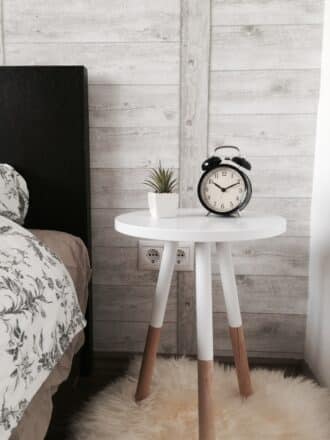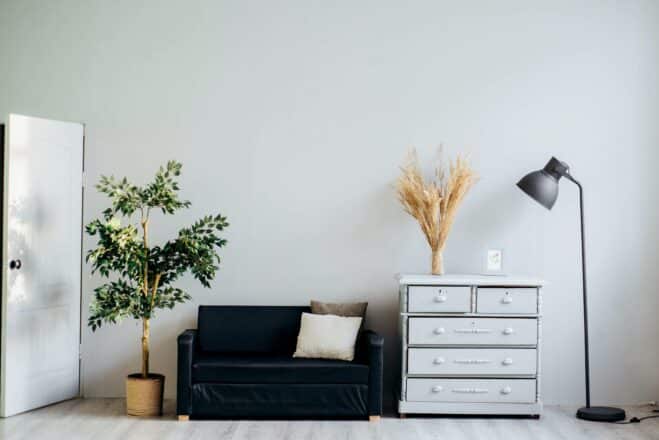You stand on the threshold of unlocking the ways to make your home safer and much more comfortable for your elderly or disabled loved ones. This insightful article shows you how essential home modifications like widened doorways and grab bars can dramatically enhance accessibility around the house. You’ll discover how simple adjustments such as replacing slippery tiles, adding ramps, and improving lighting significantly reduce the risk of accidents. But it doesn’t stop there – we also shine a light on how you can equip your bathroom with walk-in tubs, curbless showers, raised-height toilets, and how to install other safety essentials to ensure a secure environment. It’s not just about safety, it’s about enhancing independence and overall quality of life of your cherished ones. So, buckle in and get ready to explore the world of home modifications designed to kindle hope and happiness in every corner of your home.

Understanding the Importance of Home Modifications
Definition of home modifications for accessibility
home modifications for accessibility refer to changes made to the living environment to ease movement, enhance safety, and accommodate the necessary care or treatment. These changes are aimed at making it easier for elderly or disabled individuals to carry out daily activities. They can include anything from installation of ramps to electrical alterations.
Explaining the need for home modifications
The need for home modifications arises with changes in mobility, vision, hearing, or cognitive abilities due to age or disabilities. Homes built under standard considerations can pose significant challenges, particularly to individuals with physical impairments. Home modifications strip away these barriers, facilitating seamless mobility, improving safety and enabling independent living.
Impact on the quality of life of elderly and disabled
Home modifications have a tremendous impact on the quality of life of the elderly and disabled. They foster self-dependence, providing an empowering environment where individuals can perform daily activities independently. By minimizing the risk of accidents and falls, they provide a sense of security and peace of mind for both the residents and their caregivers.
Bathroom Modifications for Safety and Accessibility
Introduction to bathroom safety hazards
Bathrooms can present numerous safety hazards due to their wet and slippery nature. Limited mobility or impaired balance makes it difficult for some people to navigate safely, leading to falls. Transitioning into or out of showers or tubs, or attempting to use regular-height toilets, can be challenging and dangerous.
Installation of walk-in tubs
Walk-in tubs are a fantastic home modification that can greatly boost bathroom safety and accessibility. They have a low-threshold door, allowing easy access without the need to climb over a tub edge. This reduces the risk of slipping and falling, while providing a safe and comfortable bathing experience.
Benefits of curbless showers
Curbless showers are showers with a smooth transition from the bathroom floor to the shower floor without any barriers. This removal of tripping hazards makes it easier and safer for everyone, while additionally providing wheelchair accessibility. They are sleek and modern in design, contributing positively to the aesthetics of your bathroom.
Using raised-height toilets
raised-height toilets, also known as comfort height toilets, are slightly taller than regular toilets. This slight increase in height can make a significant difference for those who have difficulty bending or sitting on lower seats. It provides greater comfort and safety for the elderly, the disabled, and individuals recovering from surgery.
Importance of grab bars in bathrooms
People often underestimate the importance of grab bars in bathrooms. These safety devices provide much-needed support in navigating slippery surfaces, enabling independent and safe use of the bathroom. By installing grab bars near toilets, showers and tubs, you’re drastically reducing the risk of falls.
Boosting Safety with Grab Bars Around the House
Explaining the function of grab bars
Grab bars are essential aids that provide support and stability. They are common in bathrooms, but they can be helpful in other areas of the home as well. They can assist in transitioning from sitting to standing, navigating stairs, and maintaining balance while moving around.
Identifying areas for grab bar installation
Identifying the right areas for grab bar installation is crucial. In addition to bathrooms, corridors, stairways, bedrooms, and kitchens can also benefit from grab bars. Professionals can help assess the home and recommend the best locations for grab bar installation to maximize functionality.
Balancing aesthetic and functionality when installing grab bars
With careful planning and design, it’s possible to add grab bars to your home without it looking like a hospital room. Different styles and finishes are available to match any decor. Remember, when it comes to home modifications, both accessibility and aesthetics should go hand in hand.
Increasing Home Accessibility with Widened Doorways
Explaining the benefits of widened doorways
Widened doorways offer plenty of benefits, particularly for wheelchair users. A widened doorway makes it easier to move from one room to another without any obstruction, removing barriers and offering freedom to navigate the home independently.
Practicalities and considerations in widening doorways
While it is an advantageous modification, widening doorways is not as simple as it sounds. It involves understanding the structure of the home and rectifying any possible obstructions. This job often requires professional consultation to ensure the safety and structural integrity of the house.
Professional consultation for doorway modifications
A professional consultation is highly recommended when undertaking doorway modifications. Home modification experts can provide guidance and help avoid costly mistakes. They consider the specific needs of the person living in the house, suggesting the most appropriate solutions.

Installing Ramps and Plates for Uneven Surfaces
Understanding the risks of uneven floor surfaces and thresholds
Uneven floor surfaces and thresholds create a potential trip and fall hazard. They are particularly dangerous for those who are unsteady on their feet or wheelchair-dependent. Modifying these areas can contribute significantly to home safety.
Types of ramps and plates for home use
Ramps and plates come in different styles and materials to suit various needs. They bridge uneven differences in surface heights, smoothing out transitions and reducing trip hazards. Some can also withstand outdoor weather conditions, allowing safe accessibility to and from the home.
Professional installation and placement of ramps and plates
Professional installation and placement of ramps or plates ensure maximum safety and usability. Experts take into account various factors including angle, height, width, and surface texture. This helps avoid assistance-related complications, offering the individual a safer and smoother transition over uneven surfaces.
Staircase Safety Modifications
Identifying safety hazards with staircases
Staircases can pose a significant safety risk, especially for older adults and people with limited mobility. They can be difficult to navigate and can result in serious falls. Therefore, it’s important to consider necessary staircase modifications.
Benefits of adding handrails
Additional handrails on both sides of the staircase provide extra support and stability. They help people maintain balance while climbing up or down the stairs, reducing the risk of falls. For those with weaker grip strength, larger diameter handrails can ensure comfort and safety.
Installing stair lifts for mobility
For those who find stairs particularly challenging, stair lifts can be a game changer. These devices enable people to navigate stairs while seated, significantly reducing the risk of falls. It improves home accessibility, allowing inhabitants to enjoy the full use of their living space.
Improving staircase visibility with brighter LED lights
Improved lighting on and around staircases can increase visibility, making it safer to use. LED lights can provide clearer, brighter illumination without causing a glare. Consider installing lights along the stairs or with motion sensors to activate as you approach.
Effectiveness of non-slip treads on stairs
Non-slip treads provide additional traction on stair surfaces, preventing slips and falls. They offer a cost-effective solution to increasing the safety of staircases and come in a variety of designs to match your home decor.

Floor Material Modifications to Prevent Slipping
Understanding the hazards of slippery tiles when wet
Slippery tiles can be especially hazardous when wet. Bathrooms, kitchens, and entranceways are common areas where wet tiles can lead to falls. Modifying the flooring material in these areas or treating it with non-slip solutions enhances safety.
Options for replacing or treating slippery flooring
replacing slippery flooring with safer alternatives like non-slip tiles or vinyl is recommended. For a less invasive approach, treating existing floors with anti-slip coatings or adding non-slip mats can provide the needed traction.
Professional consultation for suitable floor upgrade
Choosing the right flooring can be overwhelming. Consulting with a professional can help identify the best solutions for your individual needs and preferences. They can provide insights on the latest materials and technologies in non-slip floor options.
Improving Home Visibility with Better Lighting
Understanding the role of lighting in preventing accidents
Underestimating the importance of good lighting can lead to accidents at home. Poorly lit spaces increase the risk of stumbling, bumping into objects, or falling. Adequate lighting in every area of the home, particularly where there are steps, uneven surfaces, or obstacles, is essential.
Determining areas that require better illumination
Key areas that often require better illumination include hallways, stairs, kitchens, bathrooms, and bedrooms. Proper lighting not only improves visibility, but it can also help with tasks such as cooking, reading and performing daily routines.
Considerations when installing light switches at lower heights
When enhancing lighting, consider installing light switches at lower heights or using remote controlled lights. These are more accessible for wheelchair users and children and aid in creating an inclusive environment.
Modifying Doorways and Hallways for Wheelchair Accessibility
Identifying the need for widened doorways and hallways
Widening doorways and hallways is a crucial modification for wheelchair users. Narrow passages can restrict movement and lead to potential accidents. Clear, wide spaces enable smooth and safe navigation of the home.
Professional consultation for modifying doorways and hallways
Professional consultation is instrumental when modifying doorways and hallways. Experts can assess the structure of your home and suggest feasible solutions. They will balance safety considerations with aesthetics, ensuring a welcoming, accessible environment.
Balancing aesthetics and functionality in modifications for wheelchair users
It is essential to balance aesthetics and functionality in home modifications. Experts can guide you towards stylish and functional designs that improve accessibility without compromising the look and feel of your home.
Professional Consultation for Home Modifications
Identifying the role of professionals in home modifications
Professional consultation plays a vital role in home modifications. They possess the knowledge and experience to make well-informed decisions, from assessing the needs of a person to implementing effective solutions, ensuring compliance with safety regulations.
Understanding the process of home modification consultation
The process of home modification consultation involves assessing the individual’s unique needs, examining the home, and discussing various modification options. The objective is to identify and remove barriers that hinder mobility and safety, thus enhancing the living environment.
Enhancing effectiveness of modifications through expert insights
Engaging professionals enhance the effectiveness of home modifications through their expert insights. They not only provide practical solutions, but also ensure modifications cater to the individuals long term needs. Home modifications guided by professionals can drastically improve the quality of life for the elderly and disabled, promoting independence and confidence.
